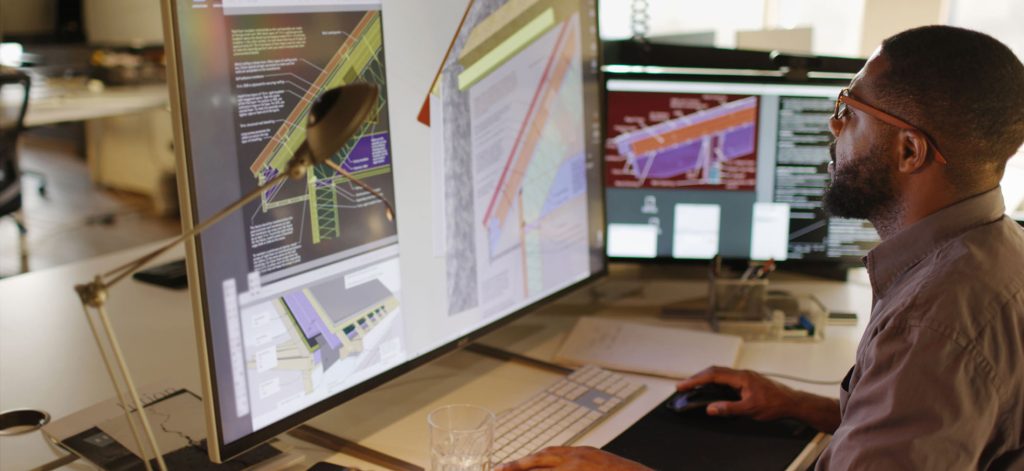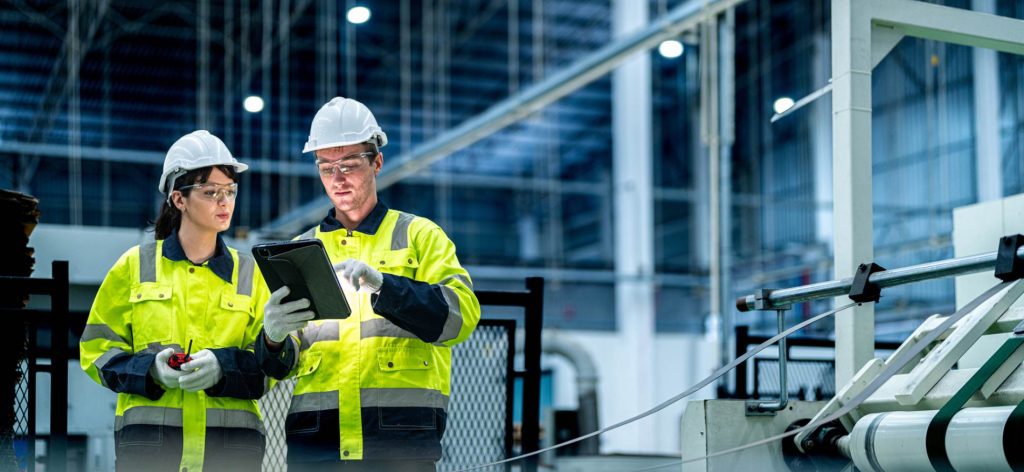What Is Warehouse Automation And Will It Affect Australia’s Manufacturing Industry?
Welcome to the world of automation and its transformative impact on warehouse management! In today’s rapidly evolving business landscape, organisations are recognising the immense benefits of incorporating automation into their operations. From minimising errors to increasing efficiency, automation holds the key to unlocking new levels of productivity and profitability. Imagine a future where warehouses seamlessly…
Welcome to the world of automation and its transformative impact on warehouse management! In today’s rapidly evolving business landscape, organisations are recognising the immense benefits of incorporating automation into their operations. From minimising errors to increasing efficiency, automation holds the key to unlocking new levels of productivity and profitability.
Imagine a future where warehouses seamlessly hum with activity, where tasks once performed by human hands are now executed flawlessly by machines. This vision is becoming a reality as more and more companies are embracing the power of automation. And the numbers don’t lie: according to the Zebra Warehousing Vision Study, a staggering 87% of decision-makers are either in the process of implementing automation or planning to expand their warehouses by 2024.
According to DHL’s Australia’s E-Commerce Companies Are Getting A Boost With Warehouse Automation report, Woolworths, a major supermarket chain in Australia, plans to construct two automated warehouses at Moorebank Logistics Park in Western Sydney. These advanced facilities, set to open in 2024, will employ robotic pickers and custom pallets to speed up restocking in individual stores, enhancing efficiency.
In a similar vein, Coles is developing data-driven fulfilment centres in Melbourne and Sydney, slated for a late 2022 launch. Powered by Ocado’s software, Coles aims to optimise operations without physical stores, aligning with evolving customer needs.
But it doesn’t stop there. The global warehouse automation market is projected to exceed a jaw-dropping AU$45 billion by 2026. That’s a clear indication of the widespread adoption and growing importance of automation in the industry. In fact, by 2025, we can expect over 4 million commercial warehouse robots to be installed in more than 50,000 warehouses worldwide.
By embracing automation, companies can reduce labour costs, improve inventory accuracy, and achieve higher levels of productivity. But it’s not just about the bottom line. Automation also enhances worker safety, freeing employees from hazardous tasks and allowing them to focus on higher-value activities.
The implications of these changes are far-reaching. With over 2.3 billion square feet of new warehousing space projected to be required by 2035, it’s clear that the growth potential for automated warehouses is tremendous. And the benefits extend beyond just physical expansion. Studies have shown that the introduction of robotics into logistics can boost productivity anywhere from 25% to a staggering 70%. Additionally, logistics costs are expected to decrease between 20% and 40% thanks to the increased efficiency brought about by automation.
So how will warehousing automation benefit Australia’s manufacturing Industry?
1. Streamlining Operations Whilst Minimising Repetitive and Menial Tasks
In the ever-evolving landscape of warehousing and logistics, the promise of robotics and automation has been a topic of discussion for quite some time. The advent of the fourth industrial revolution’s automation age has been a slow journey, especially in Australia. However, the winds of change are finally blowing, and Industry 4.0 is poised to revolutionise the logistics sector like never before.
According to Price Waterhouse Cooper, automation technologies have the potential to contribute a significant 14% to the global GDP by 2030. This substantial impact stems not only from the decreasing costs of robots as they become more commonplace but also from the remarkable precision they bring to storage operations. In fact, McKinsey research reveals that future robotics innovations will empower units with up to five times greater movement control compared to previous configurations.
Automation technologies are designed to handle and execute repetitive tasks with precision and efficiency. By delegating these tasks to robots and automated systems, human employees are relieved of the burden of monotonous and mundane activities. This frees up their time and energy to focus on more complex and value-added tasks that require human judgment, creativity, and problem-solving skills.
Integrating robotics into warehousing operations offers a multitude of benefits for the Australian supply chain. It effectively lowers operational costs and increases overall efficiency. By automating repetitive and labour-intensive tasks, businesses can redirect their resources towards upskilling their workforce, empowering employees to take on more strategic and value-added roles in management positions.
2. Revolutionising the Supply Chain
Robots exhibit remarkable accuracy and superior load-bearing capabilities, enabling them to swiftly and efficiently pick and transport warehouse items, surpassing the capabilities of their human counterparts. This translates into faster processing times and enhanced productivity. With robots leading the way, the Australian supply chain can become more efficient, bridging the gap between global counterparts in Europe and the United States.
Looking to the future, the role of robotics in Australian supply chain warehousing holds immense promise. Robots have the potential to revolutionise logistics operations, from optimising item picking and transportation on the warehouse floor to generating comprehensive reports for warehouse layout improvements. Automation becomes the driving force behind increased efficiency and operational excellence.
As reported in the Australian Financial Review, Tony Nash, the co-founder and CEO of Booktopia, shared exciting news about the implementation of robotic “shelf stackers” in their Lidcombe warehouse in Sydney. These innovative robots, capable of stacking books onto towering 4-meter-high shelves, will significantly boost Booktopia’s stock capacity. With the introduction of these robots, the e-tailer expects to increase its book inventory by an impressive range of 200,000 to 1 million books, further enhancing its offerings to customers.
3. Maximising Productivity Potential
With the power of machine learning and advanced sensors, robotic systems have become more versatile and adaptable, capable of swiftly adjusting to dynamic environments and working seamlessly alongside logistics teams. These cutting-edge solutions offer immense benefits, particularly in reducing the time spent by employees on routine or physically demanding tasks, including heavy lifting. As a result, employees can now devote their time to developing new skills, advancing their careers, and engaging in more meaningful and interesting projects.
Steve Thompsett, Chief Executive Officer of Australia & New Zealand at DHL Supply Chain, recognises the transformative impact of these solutions.
“These solutions will also significantly reduce our employees’ time on routine or physically demanding tasks, including heavy lifting. Such solutions allow them to have the opportunity to develop the skills to advance their careers, and work on meaningful and interesting projects”, said Steve Thompsett, Chief Executive Officer, Australia & New Zealand, DHL Supply Chain.
4. Increase Safety Within the Workforce
In the realm of logistics and warehouse operations, human errors can have significant consequences. Factors like hunger, fatigue, and distractions can lead to mistakes that, in turn, can result in serious accidents. The repercussions of such accidents can range from damage to products, structures, or equipment to potential harm to individuals in the vicinity.
Machines, such as robots and automated systems, offer enhanced safety levels within the warehouse environment. They are designed to adhere to strict safety protocols, ensuring compliance with regulations and minimising the chances of mishaps. These machines operate with a heightened sense of awareness, consistently monitoring their surroundings and responding swiftly to any potential hazards.
The introduction of machines in warehouse operations not only improves safety but also safeguards the integrity of products, structures, and equipment. With their precision and reliability, machines can handle delicate or heavy items with the utmost care, reducing the risk of damage during handling and transportation. They can also execute tasks in a controlled manner, minimising the potential for accidents that could impact the integrity of the warehouse infrastructure or equipment.
By embracing automation and replacing humans with machines in appropriate areas, organisations can create a safer working environment and mitigate the risks associated with human errors. This shift towards automation not only enhances safety levels but also protects valuable assets, reduces costs associated with accidents and damages, and ultimately contributes to the overall efficiency and success of warehouse operations.
Automation liberates human employees from repetitive and physically demanding tasks, allowing them to focus on skill development, career advancement, and engaging projects. The integration of robots and automated systems streamlines operations, increases accuracy, and enhances productivity, propelling the Australian supply chain towards global competitiveness. The adoption of automation is not a distant dream; it is already becoming a reality in Australia. Leading companies like Booktopia, Woolworths, and Coles are embracing robotic solutions to increase stock capacity, optimise restocking processes, and enhance operational efficiency.
The future of warehouse automation is promising, with industry projections pointing to exponential growth and widespread adoption. By embracing automation, companies can achieve substantial improvements in productivity, safety, and cost-effectiveness.
By harnessing the capabilities of robotics and advanced technologies, we can unlock a future where warehouses hum with efficiency, employees thrive in meaningful roles, and businesses achieve new heights of success.
Now is the perfect time to take your manufacturing career to the next level!
Whether you’re seeking your next career step or looking to find the ideal talent for your business, I’m here to assist you with all your recruitment needs. Reach out to me at 0422 298 390







